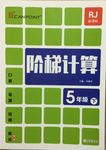题目内容
Heavy downpours last month in Rhode Island led to widespread flooding, causing millions of dollars in property damage and leaving thousands homeless. The floodwaters also poured vast amounts of raw sewage (污水) into the rivers and streams that flow into Narragansett Bay.
It sounds like the makings of an environmental nightmare, but in fact it’s just the opposite. To scientists’ delight, the sewage-loaded floodwaters have caused a well-timed growth of phytoplankton, the microscopic creatures that form the foundation of marine food chains. With more food available for fish, clams and other sea creatures, the bay’s fisheries industry is expected to benefit.
In decades past, Narragansett Bay typically experienced a late winter/early spring algal (海藻) bloom that fed creatures up and down the water column. But in recent years, the waters of Narragansett Bay have warmed greatly, interrupting this seasonal event.
Mark Berman, an oceanographer with the National Marine Fisheries Service, said the flood seemed to have sent the bay back to its normal state.
However, local, state and federal officials in Rhode Island have been battling other algal blooms that, by contrast, are causing widespread harm to the Narragansett Bay ecosystem. During summer months, sewage and agricultural runoff flows into the bay, causing large blooms. But instead of becoming food for sea creatures, much of the phytoplankton is consumed by bacteria, which grow fast in the warmer waters. The rapid bacteria growth leads to hypoxia – a decrease of oxygen in the water that can cause large fish kills. One such die-off occurred in 2003, when millions of oxygen-starved fish washed up on the beaches of Narragansett Bay.
The flood’s positive impact will probably be a one-time event, Mr. Berman said. Meanwhile, efforts to curb the harmful summer blooms continue; in 2008, for instance, Providence completed a $359 million sewage tunnel under the city designed to reduce the polluted storm overflow into Narragansett Bay.
1. Scientists believe that the raw sewage flowing into the bay will _______.
|
A.pollute the island’s environment |
B.cause lots of property damage |
|
C.increase the fisheries production |
D.destroy the food chains in the bay |
2.The potential benefit of fisheries industry relies on the _______.
|
A.warm temperatures of the bay |
B.growth of phytoplankton |
|
C.large summer alga blooms |
D.consumption of oxygen by bacteria |
3. People struggle against the summer blooms because they will ________.
|
A.pollute the local natural environment |
B.increase the production of fishery industry |
|
C.cause large fish kills of the bay indirectly |
D.provide too much food for sea creatures |
4.It can be inferred that _______.
|
A.money spent on the summer blooms has been wasted |
|
B.the government is investing to promote the local fisheries |
|
C.research of oceanology should be encouraged |
|
D.opinions on the raw sewage impact are currently contradictory |
5. The underlined word “curb” in the last paragraph can be defined as “______”.
|
A.control |
B.consume |
C.cause |
D.cure |
1.C2.B3.C4.D5.A
【解析】略

 阶梯计算系列答案
阶梯计算系列答案About twenty of us had been fortunate enough to receive invitations to a film-studio(影棚)to take part in a crowd-scene. Although our "act" would last only for a short time, we could see quite a number of interesting things.
We all stood at the far end of the studio as workmen prepared the scene, setting up trees at the edge of a winding path. Very soon, bright lights were turned on and the big movie-camera was wheeled into position. The director shouted something to the camera operator and then went to speak to the two famous actors nearby. Since it was hot in the studio, it came as a surprise to us to see one of the actors put on a heavy overcoat and start walking along the path. A big fan began blowing tiny white feathers down on him, and soon the trees were covered in "snow". Two more fans were turned on, and a "strong wind" blew through the trees. The picture looked so real that it made us feel cold.
The next scene was a complete contrast (对比). The way it was filmed was quite unusual. Pictures in front taken on an island in the Pacific were shown on a glass screen (幕). An actor and actress stood of the scene so that they looked as if they were at the water’s edge on an island. By a simple trick like this, palm trees, sandy beaches, and blue, clear skies had been brought into the studio!
Since it was our turn next, we were left wondering what scene would be prepared for us. For a full three minutes in our lives we would be experiencing the excitement of being film "stars"!
【小题1】Who is the author?
| A.A cameraman. |
| B.A film director. |
| C.A crowd-scene actor. |
| D.A workman for scene setting. |
| A.The heavy snowfall. | B.The man-made scene. |
| C.The low temperature. | D.The film being shown. |
| A.A new scene would be filmed. |
| B.More stars would act in the film. |
| C.The author would leave the studio. |
| D.The next scene would be prepared. |
